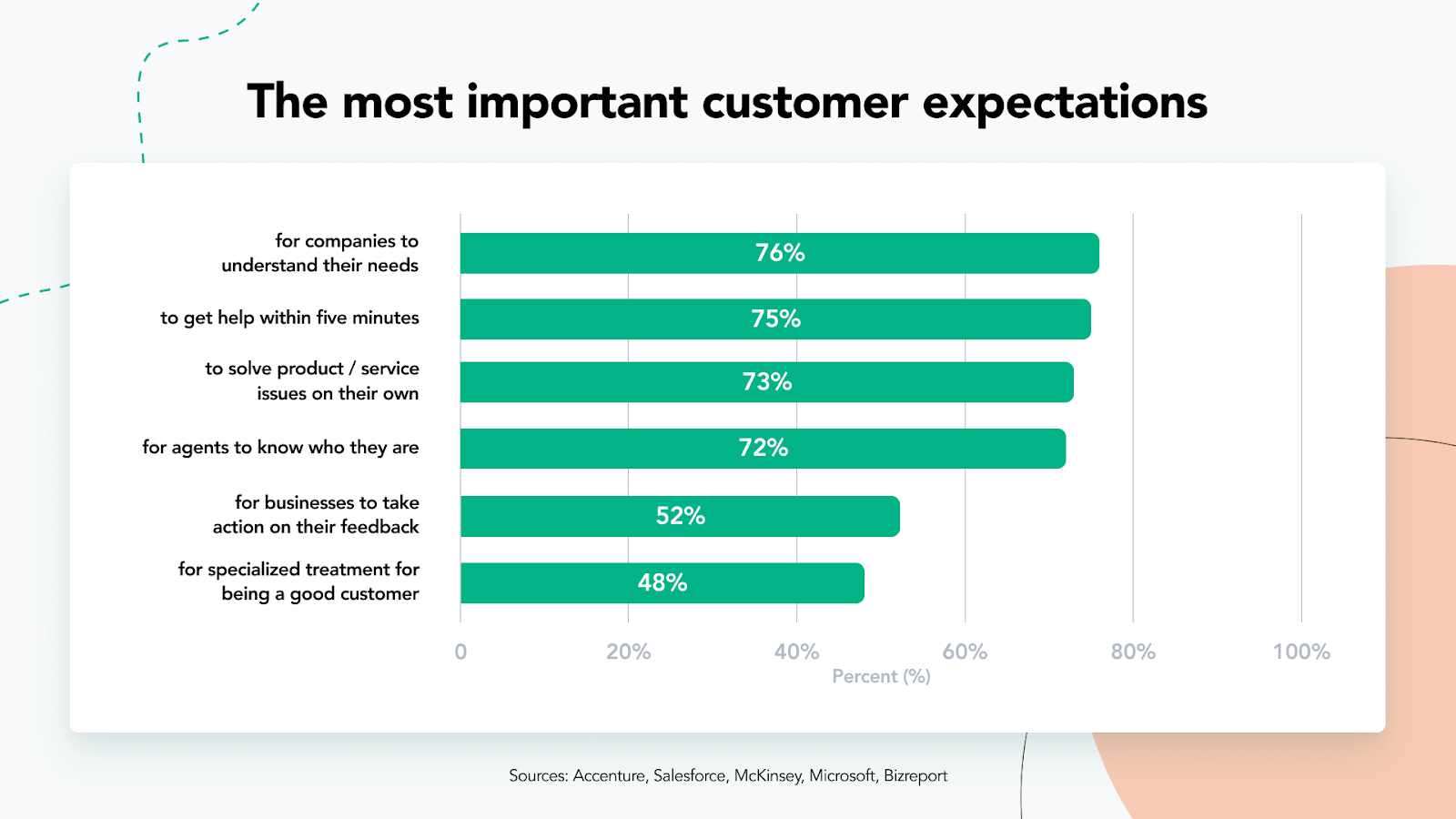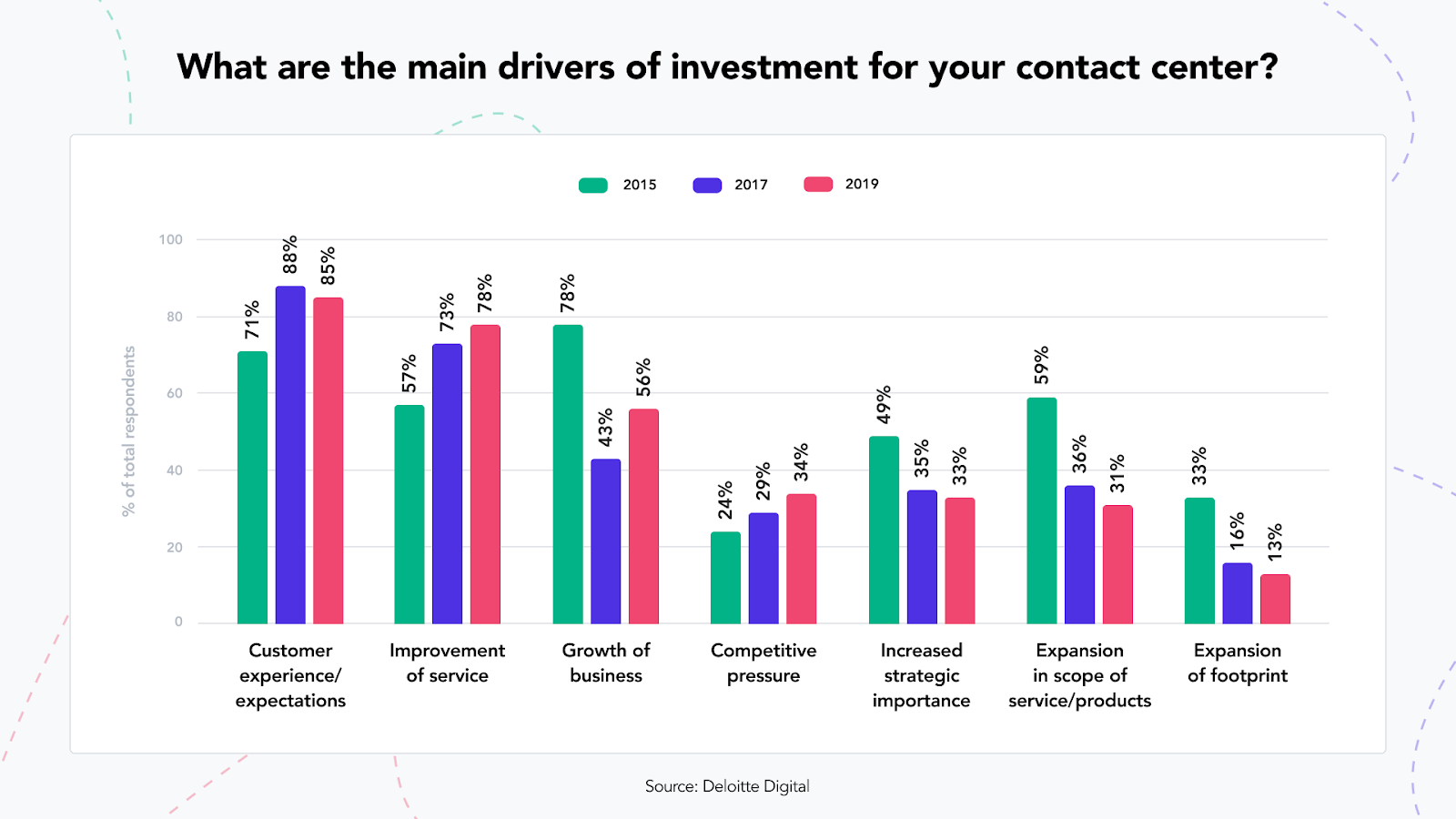- Request a demo
- United States
.png)
This is a contributed post from our partners at 8x8.
Contact centers are an integral part of a customer service strategy as they often respond to a large volume of customer calls and resolve several issues in a matter of minutes.
For centers to operate smoothly, contact center managers oversee that their teams leave customers satisfied. To do this, they monitor key metrics to assess the performance of their employees, find pain points and improve center operations.
Metrics are vital to all aspects of business, from tracking customer retention to AOV, and they can be used in pretty much any situation.
By picking the right combination of metrics, managers can collect meaningful data to make successful changes.
Contact center metrics measure the performance of a customer service agent, department, or method. By choosing and tracking key performance indicators (KPIs), you can use data to see if you’re providing excellent customer service and experience.
Instead of relying on subjective assessments, you can use tools like conversation intelligence to objectively identify issues and improvements that drive you towards a top-tier customer experience. But, it’s crucial you measure the correct metrics.
Metrics are used across many industries, from developing virtual sales techniques to improving sports performance. With hundreds of possible contact center KPIs to track, how do you know where to start?
Below, we go through ten metrics to monitor and ensure your contact center customer experience is the best it can be.
Top-tier contact center customer experiences start with customer satisfaction.
The customer satisfaction score is determined by how many positive responses you get through customer reviews and ratings divided by the total responses. The higher the score, the happier your customers are. But, if you begin to see your score drop, you may have problems brewing.
By using customer surveys, you can discover customer opinions about you, identify pain points, and learn about improvements customers want. IVR options are also available to efficiently obtain feedback from customers. Measuring this metric is essential for ensuring satisfied customers.
The net promoter score (NPS) determines customer loyalty and satisfaction by asking a simple question: how likely are you to recommend this company or product?
NPS uses a sliding scale to define customers as promoters (9 to 10), passive (7 to 8), and detractors (0 to 6). It's calculated by subtracting the percentage of detractors from the promoters.
Scores above 50 are considered acceptable and show customer loyalty and satisfaction as it increases. Scores below 50 signal unhappy customers with improvements necessary.
By paying attention to the NPS you can boost business revenue and growth, as its improvement depends directly on raising customer satisfaction.
Blocked calls are when a remote phone system integrated with inbound calls are met with a busy tone or directed to voicemail due to:
To reduce the percentage of calls blocked, you have to identify the cause of the problem and rectify it. If it’s down to understaffing or lack of adequate training, invest in additional agent training or schedule more agents for peak times.
It’s inevitable that your team will experience some blocked calls. In these situations, it can be difficult to determine which you should follow up with. To solve this problem, you can use Invoca’s Lost Sales Recovery feature to get a list of all your missed calls, organized by which are most likely to be quality leads. This will allow you to prioritize your follow-ups and recapture opportunities that may have been lost.
Additionally, consider system upgrades, like using contact-center-as-a-service solutions. But, what is contact center as a service? Basically, It’s a software model where companies purchase the technology they need, thereby reducing costs. With cloud-based options available, it offers quick and cheap upgrades to boost contact center capabilities.

Customers hate waiting in line, especially when listening to the classic harmonic go-to—copyright-free hold music. So, reducing your wait time is critical to having satisfied customers.
Average wait time measures how long customers spend in call queues by dividing the total wait time by the number of calls taken. Ideally, wait times should be as short as possible. The longer a customer has to wait, the worse their experience will be.
Much like blocked calls, you may need to increase staffing at particular hours or invest in improved software solutions to take advantage of smart queuing features or call routing.
You might ask yourself “What is call routing?” or “How is smart queuing going to help?”. Well, software like Invoca allows you to intelligently route callers based on custom criteria — for example, you can route callers by their location or by the webpage or marketing source they called from. This ensures calls reach the right agents, reducing transfers and hold times while increasing the number of satisfied customers.
Blocked calls or long wait times can lead customers to terminate the call. It's known as abandonment rate and measures customer dissatisfaction by dividing the number of abandoned calls by total calls.
Abandoned calls are standard across customer support, and having an average call abandonment rate below 10% is acceptable. But, once it starts climbing above 10%, it could be signifying issues with your contact center processes. It might be due to understaffing, technical issues, or inadequate training.
Average handling time determines agent performance and efficiency. It measures how long a customer spent on the call from initiation to the next call the agent takes, including wait time, issue resolution, and any post-call agent tasks.
Customers want their issues resolved promptly, neither too fast nor too slow. Rushing employees to shorten calls could inadvertently lower customer satisfaction and experience. Use this metric with NPS or customer satisfaction to determine how to adjust your call handling time.

Your contact center team does more than answer calls. As well as resolving customer queries, they spend time on customer service tasks after calls, such as:
The after-call work time depends on necessary tasks. However, long post-call times might indicate your agent needs additional training or is overburdened. You can reduce after-call tasks with conversation intelligence — Invoca can automatically enrich customer profiles in your CRM with information like the caller’s name, geographic location, and purchase history, taking some work off your contact center agents’ plates.
It’s important not to optimize this too much. Preventing your employees from finishing and resetting for the next call might lead to increased turnover, rushed interactions, and a poor customer experience. With expectations for the contact center experience being higher than ever, it’s vital to think carefully about your strategy.
Resolving a customer issue on the first call is extremely important for contact center success. The customer churn rate is 3% for first call resolutions, but it jumps to 38% if the issue drags onto second or further calls.
High churn rates affect your reputation and indicate poor customer experiences. By increasing first-call resolutions, you can boost customer satisfaction rates and provide top-tier experiences for your customers.
Software tools like Signal Discovery from Invoca can provide real-time conversation intelligence about calls, helping identify common frustrations and resolve them faster.

Contact centers often have service-level goals. For instance, an 80/30 goal means 80% of incoming calls are answered in 30 seconds or less.
Service level agreements might be due to external business contracts or in-house targets. In any case, measuring this metric could be vital to your revenue, business performance, and growth.

Your contact center reputation depends on the response time of your customer service agents. If you’re failing to hit your service level, it indicates your business lacks resources to fulfill customer needs. You may need to invest in new customer service tools, like marketing analytics, or employees to reach your service level.
Ensuring your employees' call quality is up to scratch is industry-standard. Contact quality uses specialists or automated quality assurance (QA) tools to evaluate recorded calls and assess several customer service agent characteristics, such as:
Platforms, like Invoca, can provide automated QA tools for call scoring, reporting, and immediate conversation analytics to coach your agents without waiting for lengthy evaluations. Check out Invoca’s automated QA, here.
Unlike previous metrics, this isn't purely numbers-based. However, it provides a realistic picture of how your agents take calls. It can help develop training plans to bring a consistent tone and message to your contact centers and ensure customers receive the same high-quality support experience from each agent.
For instance, if your contact center deals with customer issues for stock monitoring software, ensuring that your agents comprehensively understand the software and explain solutions clearly is crucial to resolving customer frustrations.

To provide a top-tier customer experience, you need to know where you currently stand, and that’s where metrics are invaluable. They show your contact center productivity and highlight areas of concern. It’s one reason why they’re popular in startup growth marketing.
It’s vital to monitor the metrics that matter to you. There are hundreds of KPIs, both old and new. Rather than measuring each one, pick the right mix to optimize your customer experience.
However, don't overdo it. Although metrics are good indicators, hyper-focusing on the numbers can increase pressure on employees and lower customer satisfaction.
Here, we’ve mainly covered inbound calls, but you may be wondering, what is outbound contact center metrics? Many of these metrics can be used to monitor outgoing call KPIs, but ultimately they depend on what you want to achieve.
Your contact centers depend on technology and people to power them. Use metrics to choose the right software and train your employees to provide excellent customer service.
To learn more about how Invoca’s AI-powered conversation intelligence solution can improve call center experiences, check out our Ultimate Guide to Conversation Intelligence or request your personalized demo.

John Allen is the Director of SEO for 8x8, a leading communication platform and computer based phone systems with integrated contact center, voice, video, and chat functionality that caters to inbound, outbound, and WFO contact centers. John is a marketing professional with over 14 years experience in the field, and an extensive background in building and optimizing digital marketing programs across SEM, SEO, and a myriad of services. Connect with him on LinkedIn. He also has written for Firsthand and Nutcache.
